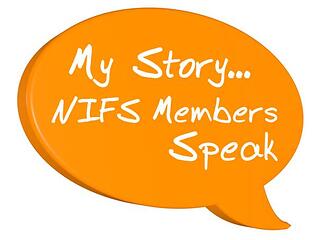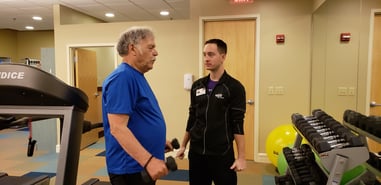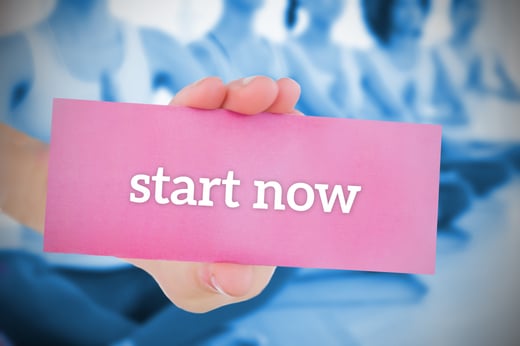 NIFS would like to highlight Cheryl Kussow, who recently completed NIFS Personal Fitness Quest program at one of our client sites. This program takes new members through a goal-setting session, pre- and post-fitness assessment, and 8 weeks of one-on-one training sessions with an Exercise Specialist. These sessions are focused on tailoring their experience to meet their specific goals and lifestyle to pave the best path forward when beginning their exercise program in their corporate fitness facility.
NIFS would like to highlight Cheryl Kussow, who recently completed NIFS Personal Fitness Quest program at one of our client sites. This program takes new members through a goal-setting session, pre- and post-fitness assessment, and 8 weeks of one-on-one training sessions with an Exercise Specialist. These sessions are focused on tailoring their experience to meet their specific goals and lifestyle to pave the best path forward when beginning their exercise program in their corporate fitness facility.
Read about how Cheryl has benefited from the Personal Fitness Quest through improvement in her overall health and fitness level, managing her injuries during exercise, and perhaps the most impressive feat of crossing the finish line in her recent 30-mile benefit hike!
SHARE YOUR “STORY” OR A BIT ABOUT YOURSELF
I recently went back to work as a Computer System Validation Specialist and Project Manager after being home for many years with my children and working in a nonprofit. Going back to work full time was a new challenge as I tried to balance my work, family, friends, and fitness. Unfortunately, my fitness took the biggest hit.
However, I would not have traded that time at home as 4.5 years ago, my then 12-year-old son was diagnosed with Wilms kidney cancer. His life was saved through sports, strangely enough, as a hit in the side with a lacrosse stick sent us for a revealing CAT scan that identified this unknown tumor. Through surgery and chemo, my son Seth used his dedication and willpower he learned in sports to get through this difficult time. In fact, a Make-a-Wish trip to the Pro Bowl was one of the biggest motivations that kept his spirits up (and meeting a bunch of Packers and Colts players!).
Sports were the center of his life, and I decided that fitness needed to take a stronger priority in mine too, so I could continue to enjoy my family and all of the fun family hiking/camping vacations around the USA we took. My husband and I also made a commitment to raising money, not only for Make-a-Wish but also for CureSearch, which provides funding for pediatric cancer research and resources for families. To do this, we signed up for the CureSearch Ultimate Hike, a one-day, 30-mile hike on the Tecumseh Trail in southern Indiana (and other sites around the USA), blending both goals together. October 3 was hike day, and I had some work to do to get in shape!
WHY DID YOU JOIN THIS PROGRAM?
As I mentioned above, I wanted to improve my fitness for myself and to prepare for a long hike. I was walking 9 miles a week and doing some cardio classes, but did not feel that would be sufficient. One of my main goals was to incorporate more strength training. I have always felt less confident in doing strength training—knowing the best exercises, how to do them correctly, and knowing how much weight to use. Often at other gyms I previously attended, the cost was prohibitive or the trainers were very critical and viewed you as “unfit” if you were not in super shape or thin. Stephanie created a great positive atmosphere to reach my goals through personal training.
WHAT DID YOU ENJOY MOST ABOUT THE PROGRAM?
First, Stephanie, my trainer, did a great job in understanding my goals—specifically that I wanted to successfully hike 30 miles in one day and get stronger, but also that I had a few injuries to work around, too. She modified exercises as needed and really worked with me to improve my weaker areas, especially ones related to hiking long distances and up and down hills. One of the best parts about working with her, though, was I felt I made a new friend, too, in our conversations during training. Even though I am done officially training with her, I can ask her for help when I am working out in the gym; she has encouraged me to try other classes, keeps me accountable when she hasn’t seen me, and even can tell when I may need to modify an exercise if I am struggling. It is great not to feel judged or silly asking questions about how to use a particular piece of equipment. She is very patient and explains exercises well.
WHAT DID YOU ACCOMPLISH DURING THE PROGRAM?
During the program and the training I did on my own, I improved my fitness greatly as evidenced by my improved strength, weight (15 pounds) and inches lost, balance, and ankle and core stability. I also felt it helped me reduce my stress and make healthier food choices. I felt that I could be fit and full of energy.
Of course the huge goal I had set with my husband was also achieved. Hiking 30 miles in 14 hours on a hilly trail in the dark, cold, and rain for much of the day was a challenge but a success. We also raised over $5,600 personally, and the hike as a whole raised over $90,000 for pediatric cancer. It was incredibly emotional, inspirational, and spiritual (and, well, occasionally painful!) event, although I recovered quickly after the hike.
My knee did start bothering me going down hills for some time in the middle and I slowed down quite a lot, but I was determined to finish. Advil, adrenaline, conditioned muscles, and the power of prayer kicked in, and all of a sudden I was pain free and started booking. I just had to think about the moms on the hike who had lost children to cancer, or I thought about God’s blessing of my son Seth’s survival and how he powered through all he had to endure. Had you asked me before, though, if I would have ever thought I could hike that far, I don’t think I would have had that confidence without the training and encouragement I received by participating in this program. It is amazing that through training and hiking, my new friends and I were able to help fund critical cancer research and get in shape too!
HOW DID THE PROGRAM HELP YOU TO STAY MOTIVATED?
Having a time set every week to meet and exercise was critical as I find that accountability very important for my motivation. In fact, now that we don’t have our regularly scheduled time as my eight sessions are up, I have to find some other ways to make sure I don’t push the commitment away. Luckily the gym has also had a few other mini incentive programs to help keep us active, and I have also had a chance to meet others in the gym, which helps. I like having that social interaction. Having someone to work out with you either as a trainer coaching you individually or with others in a class keeps me working hard (It would be way too easy to give up if I was on my own!).
ANY OTHER THOUGHTS YOU WISH TO SHARE ABOUT YOUR EXPERIENCE?
I encourage everyone to set goals in both your life and your fitness plans and seek others to help you on that journey to wellness. The blessings of strength you can gain can then be used as a blessing to others!
~ Cheryl Kussow
Interested in how you can do better in your corporate fitness center? Download our quick read for three tips for a successful corporate fitness center for your employees.

 There are many reasons to work with a personal trainer from NIFS, and in this blog we cover the top five: forming habits, fun, accountability, comfortability, and safety.
There are many reasons to work with a personal trainer from NIFS, and in this blog we cover the top five: forming habits, fun, accountability, comfortability, and safety.

.jpg?width=320&name=TRX%20Cher%20(2).jpg) There are a number of misconceptions these days about personal trainers and what it’s like to be one. Don’t all personal trainers have perfect bodies and eat nothing but fruits,
There are a number of misconceptions these days about personal trainers and what it’s like to be one. Don’t all personal trainers have perfect bodies and eat nothing but fruits, 



 You know you want and need to have a regular plan for your exercise, but where do you begin to
You know you want and need to have a regular plan for your exercise, but where do you begin to